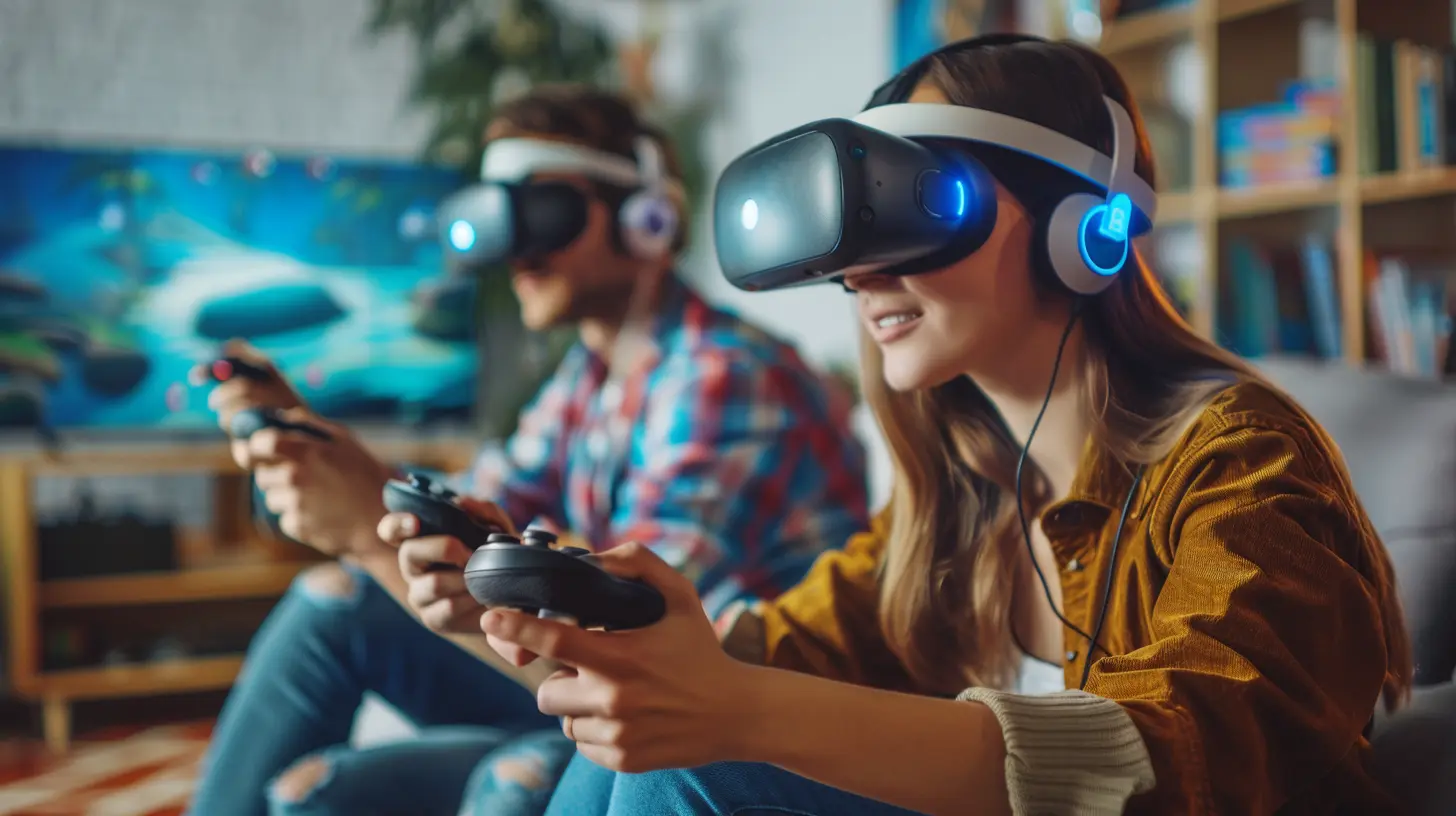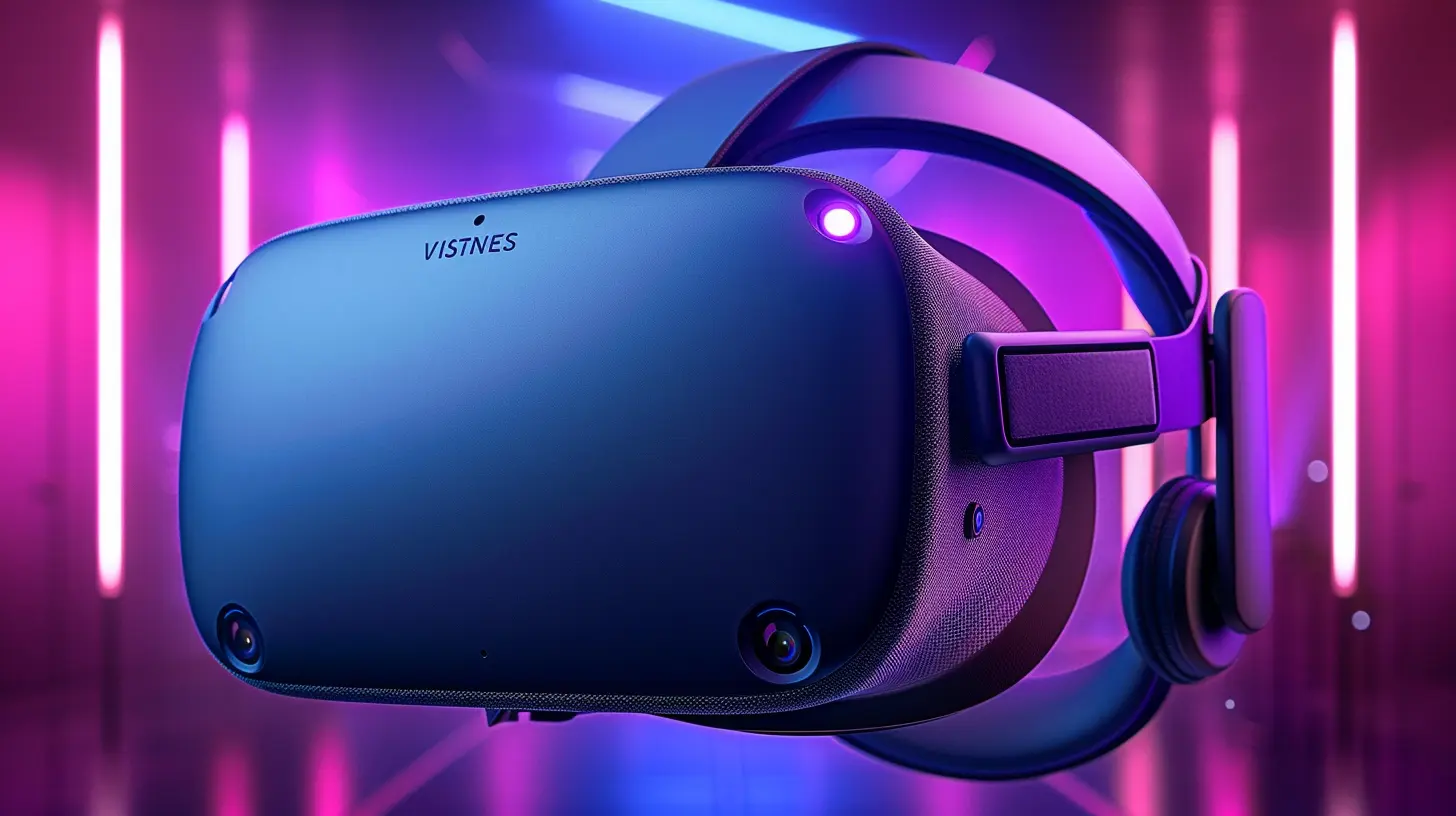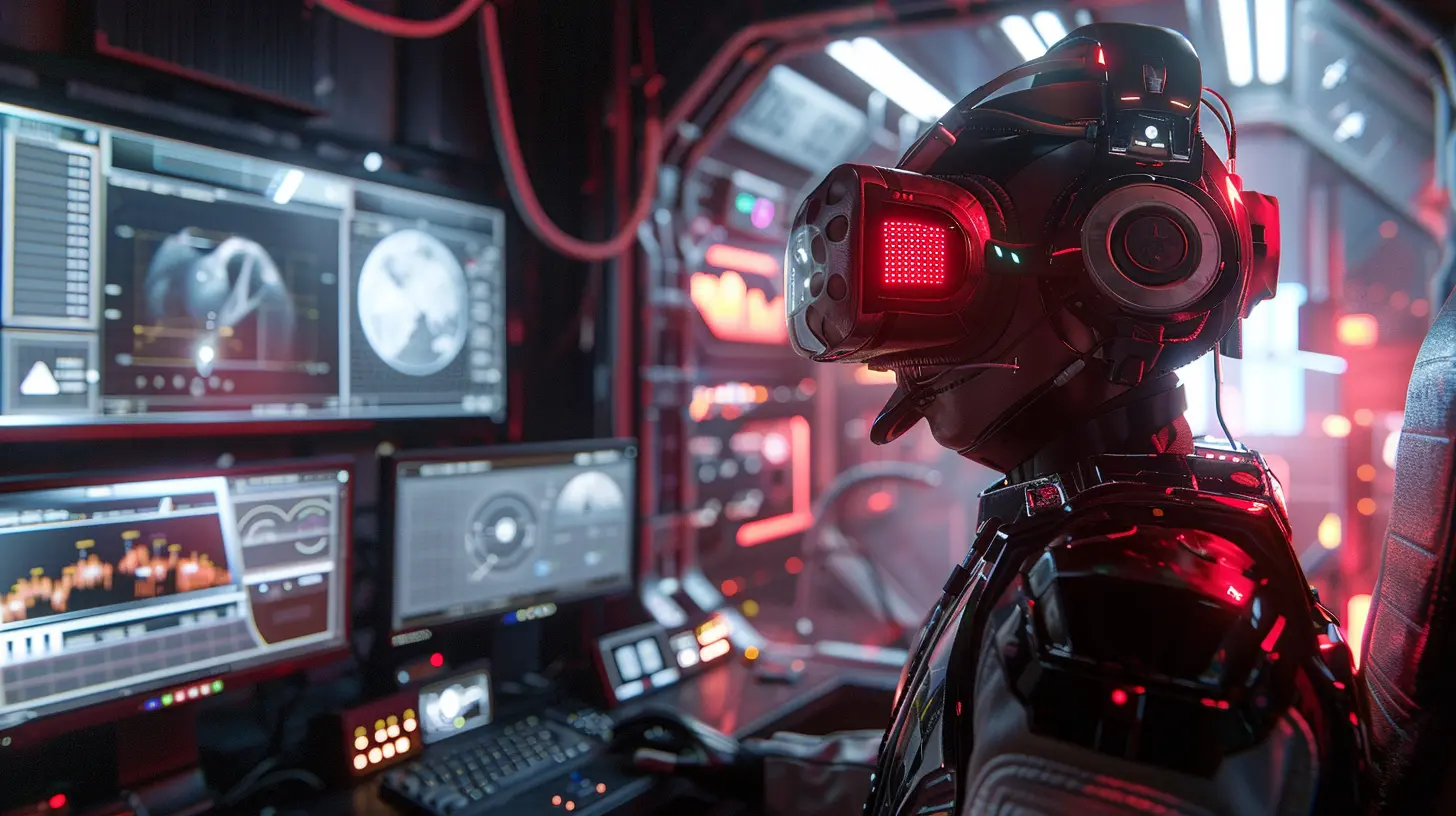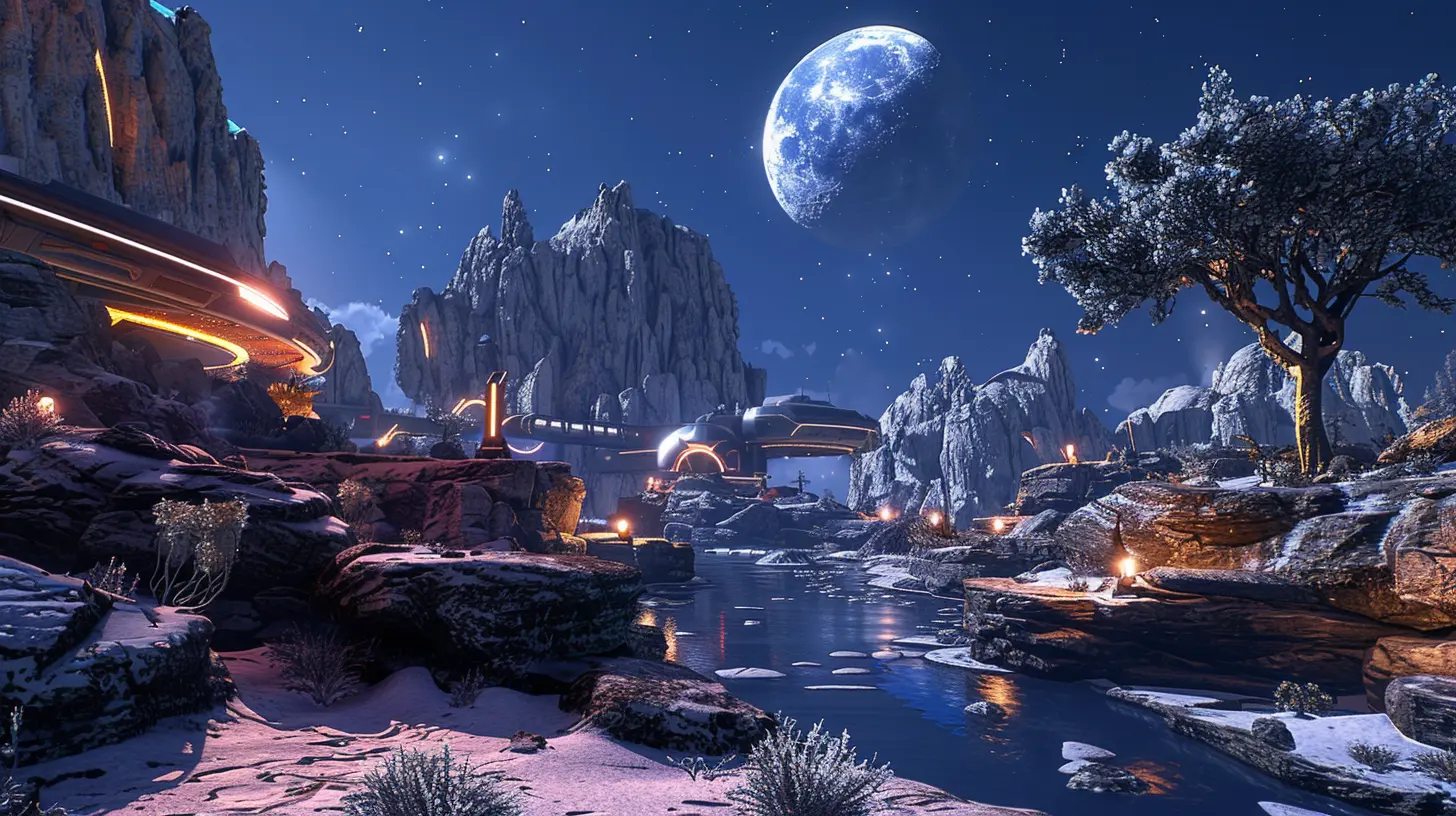Virtual Reality: System Requirements for Immersive Gaming
26 June 2025
Virtual Reality (VR) feels like stepping into the future, doesn’t it? Imagine popping on a headset and getting whisked away to a fantasy world, a zombie-infested wasteland, or a futuristic battleground — all from your living room. It's not just gaming anymore; it’s immersion in the truest sense. But before you dive headfirst into the VR realm, there's a little reality check we need to do — are your system requirements up to scratch?
You see, VR isn’t like playing your everyday PC game. It’s demanding. It wants power, speed, and smoothness. Your computer needs to be a beast to run these futuristic playgrounds without turning your VR experience into a laggy, nausea-inducing nightmare. Sounds intimidating? Don’t worry. Let’s break it down and look at everything you need for a smooth ride through virtual dimensions.
🧠 Why System Requirements Matter in VR
Okay, let’s start with the basics — why are system requirements such a big deal for VR?Think of it like preparing for space travel. You wouldn’t board a rocket without making sure it’s ready for liftoff, right? Similarly, VR demands specific hardware to function the way it's supposed to. Your PC needs to render two high-resolution images at once (one for each eye), track your head and body movements in real-time, and respond instantly to input — all without missing a beat.
If your setup can't handle that kind of load, you're looking at stuttering visuals, delayed reactions, and potentially, motion sickness. Not exactly the immersive gaming dream, huh?
🎧 The Core Components You Need for VR Gaming
Let’s get to the juicy part — what exactly do you need in your PC setup to run VR without breaking a sweat?1. 🚀 Graphics Card (GPU) – The MVP of VR
This is where all the magic happens. A strong GPU is the most critical component when it comes to VR. Since your system is basically doubling the workload (remember, one stream per eye), it needs a powerful graphics engine.Minimum VR-Ready GPUs:
- NVIDIA GeForce GTX 1660 or AMD Radeon RX 590
- For better performance: NVIDIA RTX 2060, 3060, or AMD RX 6700 XT+
- For ultra-smooth, next-gen VR: RTX 4070, 4080, or AMD RX 7900 XTX
If you skimp on the GPU, you'll notice choppy gameplay and lower image quality. Your immersion takes a hit, and that’s not what VR is about.
2. 🧠 CPU – The Thinking Cap of Your System
Your processor doesn’t need to be insanely powerful, but it shouldn’t be ancient either. It handles everything other than graphics — AI, logic, background tasks, and your game’s general operations.Recommended CPUs for VR:
- Intel i5-11400 or AMD Ryzen 5 3600 (Minimum)
- Better performance: Intel i7-12700 or Ryzen 7 5800X
- Top-tier: Intel i9-13900K or Ryzen 9 7950X
Pairing a high-end GPU with a potato CPU? That's like putting a Ferrari engine in a go-kart — you won’t go far.
3. 🧠 RAM – Short-Term Memory Matters
VR games aren’t just GPU and CPU-intensive; they also eat up memory. 8GB used to be enough. Not anymore.Minimum RAM for VR: 16GB
Sure, you might get by with 8GB on some lighter VR titles, but 16GB is the new standard, and 32GB is your friend if you’re multitasking or streaming.
4. 💾 Storage – Loading Speeds and Space Galore
Have you seen how big modern games are? Now add VR to the mix. You'll need both speed and space.- SSD Required: Unlike traditional spinning drives (HDD), Solid State Drives load faster and reduce lag.
- Minimum Suggestion: 512GB SSD
- Ideal Setup: 1TB NVMe SSD (If you hate load screens, this is your best friend)
Many AAA VR games can easily cross 50GB. A few games and your drive’s full.
5. 🖥️ Ports & Connectivity – Don't Get Tangled
Most VR headsets connect via USB and HDMI or DisplayPort. Make sure your motherboard and GPU have enough ports.Common Requirements:
- 1x HDMI 1.3 or DisplayPort
- 3x USB 3.0 Ports
- 1x USB 2.0 Port
Wireless VR (like Oculus Quest with Air Link) is gaining popularity, but wired still rules when it comes to performance.
🎮 VR Headsets & Their Specific Demands
Not all headsets are created equal. Some are more forgiving on your system specs, while others want top-tier performance. Let’s go through a few popular ones:🔹 Meta Quest 2 (Standalone / Optional PC VR)
- Doesn’t require a PC for basic games- Can connect to a PC (via Link or Air Link) for more demanding PC VR titles
- PC requirements:
- GPU: GTX 1660 or better
- CPU: i5-4590 or Ryzen 5 1500X
- RAM: 8GB minimum, 16GB recommended
🔹 Valve Index
- Premium PC VR headset- Requires high frame rates (120Hz+)
- PC requirements:
- GPU: GTX 1070 or better
- CPU: i5-8500 / Ryzen 5 2600 or better
- RAM: 16GB+
🔹 HP Reverb G2
- Known for crystal-clear visuals, which demand more from your system- PC requirements:
- GPU: RTX 2060 or better
- CPU: i5-9600 or Ryzen 5 3600
- RAM: 16GB+

🛠️ Optional (But Handy) VR Accessories
Let’s talk upgrades. No, these aren’t required for VR to work, but they definitely enhance the experience.🎤 External Sensors
Some headsets (like the original Oculus Rift) use external sensors for tracking. It adds better precision but needs more USB ports and room setup.🎧 High-Quality Audio
Some headsets have built-in audio, but investing in a good headset or spatial sound system brings games to life. Imagine hearing footsteps behind you in a horror VR game — spooky, right?🌬️ Cooling Systems
VR makes your PC sweat. Literally. Make sure you’ve got decent airflow, especially if you’re gaming for long hours. Poor ventilation = thermal throttling = performance drops.🪑 VR-Ready Play Space
No, it’s not a “spec,” but it’s critical. You’ll need at least 6.5ft x 6.5ft for room-scale VR. Clear the coffee table — your shins will thank you later.🔌 Can Laptops Run VR?
Short answer? Yes, but it depends.Many gaming laptops today are more than capable of VR gaming. However, make sure it’s labeled “VR-ready.” Check for a dedicated GPU (like RTX 3060 or better), recent-gen processor, 16GB RAM, and fast SSD storage.
Just know that laptops run hotter and louder under VR loads. You'll need to monitor temps and maybe even use a cooling pad.
🧪 How to Test If Your PC is VR-Ready
Not sure if your rig can handle the virtual world? There are tools to help:- SteamVR Performance Test: It simulates a VR experience and tells you if your PC can handle it.
- Oculus Compatibility Tool: For Meta headsets, this quickly scans your system and gives a verdict.
- PC VR Game Benchmarks: Look up benchmarks for VR games you're excited about — see how your GPU/CPU combo performs.
A little research now saves you a ton of frustration later.
💡 Upgrading vs. Buying New: Which Makes Sense?
So, you ran the tests, and your PC is gasping for air. What now?Upgrade If:
- You already have a decent GPU or CPU — just upgrade the weaker component- You’re comfortable opening your rig and swapping parts
- You're on a budget
Buy New If:
- Your system is over 5 years old- You need a full jump in performance
- You don’t want to deal with compatibility or bottleneck issues
Pre-built VR-ready PCs are becoming more affordable and can save time.
💬 Final Thoughts: Is It Worth the Setup?
Setting up for VR is like building a rocket ship just to visit another planet — a bit expensive, a bit technical, but sooo worth it. Once you're in, there's no going back. Traditional gaming feels flat. You’ll wonder how you ever played horror games on a monitor or raced cars without physically turning your head into corners.Just remember, performance is the glue that holds the illusion together. Skimping on system requirements in VR is like skydiving without checking your parachute — risky and not very fun.
So, future VR pilot… is your rig ready to blast off?
all images in this post were generated using AI tools
Category:
System RequirementsAuthor:

Lucy Ross
Discussion
rate this article
2 comments
Blake Jennings
Technology evolves, but do our minds keep pace?
October 24, 2025 at 2:43 PM

Lucy Ross
Indeed, as technology advances, it's crucial for us to continually adapt our thinking to fully harness its potential and enhance our experiences.
Zinn White
As virtual reality technology evolves, understanding system requirements is crucial for an optimal gaming experience. Investing in a robust setup not only enhances immersion but also prolongs the lifespan of your hardware. Always prioritize compatibility and performance to fully appreciate the rich, engaging worlds VR offers. Happy gaming!
July 4, 2025 at 4:15 AM

Lucy Ross
Thank you for your insightful comment! You're absolutely right—investing in a powerful setup and ensuring compatibility are key to maximizing the VR experience. Happy gaming to you too!


